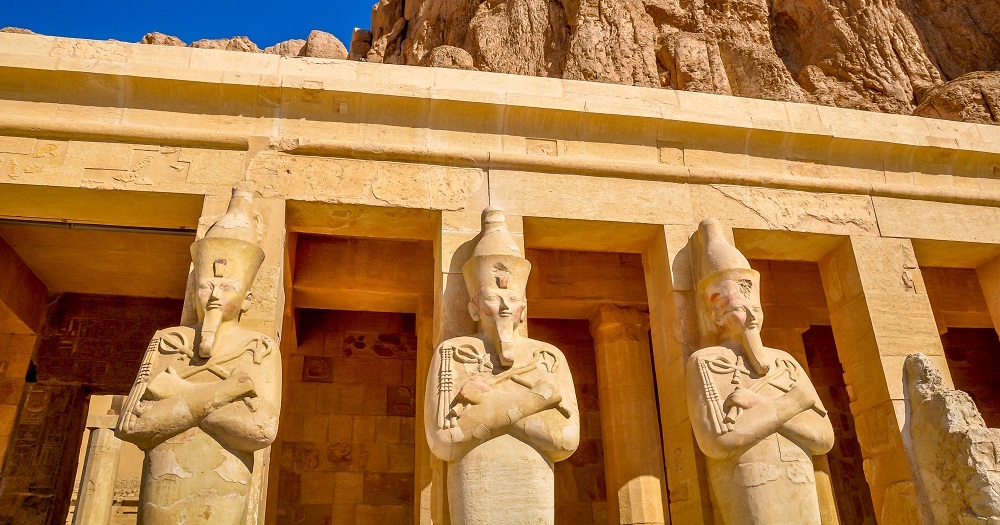 Beyonce, Gaga, even Hillary ain’t got nothing on ancient Egypt’s biggest diva. She ruled the world’s most powerful empire over 3400 years before women even got the vote in the United States. And to do it, she became the world’s first and most famous drag king.
Beyonce, Gaga, even Hillary ain’t got nothing on ancient Egypt’s biggest diva. She ruled the world’s most powerful empire over 3400 years before women even got the vote in the United States. And to do it, she became the world’s first and most famous drag king.
Queen Hapshetsut was already a big deal back in her day as the daughter of pharaoh Thutmose I, and she doubled her awesomeness when she married her half-brother and her father’s successor, Thutmose II. But her real diva move came when her brother-husband died and left the throne to his infant son by another mother, Thutmose III. Not about to be ok with being displaced as queen bee, Hapshetsut elbowed her way into ruling as her stepson’s regent while he was still a minor. However, within a few years she bumped him aside and made herself Pharaoh.
Hapshetsut wasn’t the first woman to rule Egypt in her own right (that was likely Sobekneferu, but for only four short years), but she was the first to strengthen and sustain her claim to the pharaonic throne by assuming the appearance and role of a male. She not only wore a false beard and claimed to be king of Egypt, but she also ordered that her likeness in temples be sculpted with male features. Sculptors, however, couldn’t help but portray her more realistically. That’s why statuary of Hapshetsut features soft facial features and wide hips but a kingly beard protruding from her chin.
Homegirl was significant for more than just her bad ass political moves though. She was a prolific builder throughout her realm and a proponent of international trade. She famously sent an expedition to the kingdom of Punt, which brought back myrrh, frankincense, and various other exotic products. She also greatly increased the wealth and prestige of Egypt during her substantial reign.
Hapshetsut hung onto power for her entire natural life, after which her stepson, who was originally supposed to be king, took back over the throne that was snatched away from him by his stepmother. As you can imagine, Thutmose III was quite pissed about being usurped for several decades. Both he and his son tried to erase Hapshetsut’s legacy by destroying statues of her and chiseling out her cartouches from carved historical records, but lucky for us some references to her sneaky awesomeness survived.
Most notably of which is the portion of her mortuary temple still standing, known as Deir el-Bahari in Arabic or simply Hapshetsut’s Temple, as we often call it. This site is a must-see when you’re in Luxor, as it’s just a short drive around a mountain from the Valley of the Kings on the west bank of the Nile. And based on the long catwalk built into the front of it, it’s as if she knew that people 3400 years later would be hailing her as the world’s first real diva.



